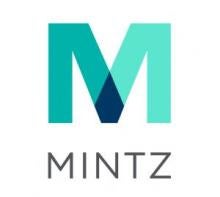What is algorithmic pricing? The Canadian Competition Bureau broadly defines it as “the process of using automated algorithms to set or recommend prices for products of services, often in real time, based on a set of data inputs.”[1] That process and those data points vary on a case-by-case basis, and algorithmic pricing has become the subject of increasing scrutiny, litigation, and legislation over the last several years.
The U.S. Department of Justice, for example, has highlighted algorithmic pricing collusion in the healthcare industry and housing market as a top priority for its Antitrust Division. The Washington, D.C. and Arizona Attorneys General, as well as a class of home renters, are seeking legal action against RealPage, a software company, and large residential landlords. The enforcers and plaintiffs claim that the defendants are using the software to exchange sensitive information to set rents using the same tool that draws from the same set of data. In the old (non-digital) days, a similar exchange of information could have been found to be a conspiracy that unreasonably restrains trade in the form of an agreement among competitors to fix prices – a criminal violation of the Sherman Antitrust Act.
In New York, lawmakers passed the New York Algorithmic Pricing Disclosure Act, to “shed light on surveillance pricing” which the New York State Division of the Budget described as an opaque practice that “strips consumers of their ability to comparison shop and plan for the price of goods and services.”[2]
This law requires any entity that sets the price of a good or service using personalized algorithmic pricing to advertise or sell to a New York consumer using the personal data specific to that consumer to include this disclosure: “THIS PRICE WAS SET BY AN ALGORITHM USING YOUR PERSONAL DATA.” The law includes some exceptions, but the National Retail Federation (NRF), the world’s largest retail trade organization which represents retailers of all sizes, formats, and channels of distribution in the U.S. and 45 countries, says it violates their members’ First Amendment right to free speech.
According to its Complaint, the NRF says members use algorithmic pricing to deliver lower prices to consumers, helping them save money. Retailers achieve this end by using purchase histories, items in consumers online shopping carts, zip codes, and other information that customers voluntarily share. New York State says that retailers can collect “mountains of personal data” which could mean that a company is “charging you and your neighbor different prices for the same product, based on your individual willingness to pay.” While the NRF recognizes in its Complaint that the government can express an opinion that algorithmic pricing is dangerous, the government cannot, according to NRF, also compel businesses who disagree with the sentiment to do so, in this case through the disclosure required by the law.
The Supreme Court announced the Compelled Speech Doctrine in 1943 in West Virginia State Board of Education v. Barnette, where it held that a state board of education could not require school children to recite the Pledge of Allegiance because the government cannot enforce unanimity of opinion on any topic. Forty years later, in Zauderer v. Office of Disciplinary Counsel of Supreme Court of Ohio, the Supreme Court addressed the doctrine’s application to corporations, holding that the “compelled speech” doctrine is not violated by government requirements obligating corporations to disclose “purely factual and uncontroversial information” in their commercial speech. The threshold issue in a compelled speech case is which level of scrutiny to apply, and the NRF is asking S.D.N.Y. to apply strict scrutiny in this case to find that New York law is outright illegal because it compels speech at all. Alternatively, the NRF is asking the court to apply intermediate scrutiny, forcing New York State to prove that the law directly advances a substantial governmental interest, and that the means New York has chosen are not more extensive than necessary.
Footnotes
[1] Competition Bureau Canada, Algorithmic pricing and competition: Discussion paper (2025), available here: https://competition-bureau.canada.ca/en/how-we-foster-competition/education-and-outreach/publications/algorithmic-pricing-and-competition-discussion-paper.
[2] N.Y. State Div. of Budget, Governor Hochul Signs New Legislation to Protect Consumers and Keep Money in New Yorkers’ Pockets as Part of the FY 2026 Budget (May 9, 2025), available here: https://www.budget.ny.gov/pubs/press/2025/fy26-enacted-budget-consumer-protection.html.




 />i
/>i
